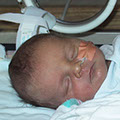 About Margot
About Margot
Born in 2000, Margot went straight into the NICU for a month
 GoPro Hero
GoPro Hero
Everyday, incredible
accomplishments captured on video
 Smile!
Smile!
3 providers, 4 months, 5 appointments, too many phone calls, to fix 1 cavity
 Real food, real meals
Real food, real meals
From drip-feeding a chemical blend to real food. Recipes included!
 No "Can't Do"
No "Can't Do"
A new video challenging assumptions about what Margot can enjoy and do.
 Siege or surrender
Siege or surrender
On a Christmas trip to the tropics, I waved a white flag to our new reality.
 Prisoner of Routine
Prisoner of Routine
Creating functional & fun routines took lots of effort but salvaged our sanity.
 Trail Adventures
Trail Adventures
A blog for the Rails to Trails Conservancy offers tips to help hit the trails.
 Leap of faith: Act I
Leap of faith: Act I
My hopes took a hit, so I needed inspiration to take risks again, like kayaking.
 Leap of faith: Act II
Leap of faith: Act II
Inspired to kayak? From idea to implementation, and a lesson for research.
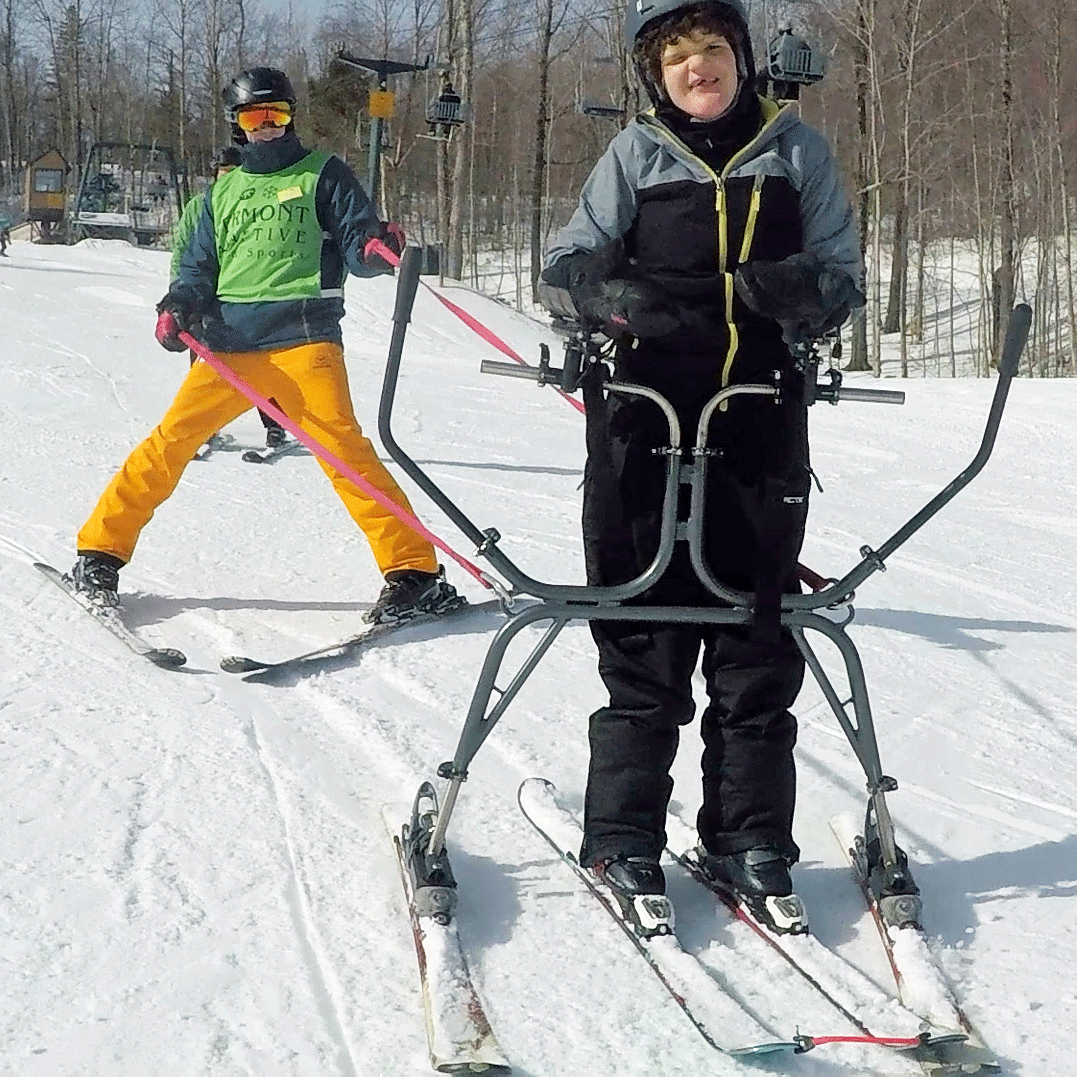 It's all downhill!
It's all downhill!
Can Margot learn to ski? With expert help and sensible teaching, yes!
 Best summer ever!
Best summer ever!
After 18 years, getting summer right for Margot and the whole family!
Smile! A trip to which dentist?
September 23, 2016
No one likes a toothache, but we can usually take comfort in the knowledge that it will not last forever. Many dentists can respond quickly if a patient is in pain, and most cavities can be filled in an hour with one brief call to the dentist.
It is a very different story for someone like Margot. She has no easy way of telling us if she has a toothache, and no confidence that the pain will not last forever. So what was required to get Margot's teeth cleaned and complete a checkup for a possible toothache? A journey that took 4 months, hours on the telephone, 5 appointments with 3 different providers, and 5 days of missed work. And I am still getting billed more than a year later for a service that is obviously essential and presumably pre-authorized.
This is one story about one of many bureaucratic mazes parents must navigate, just to get care that would otherwise be considered routine. This is pretty typical for parents of children with disabilities, and it remains a persistent and significant gap in care. But we had to do what it took to make sure she was not in pain and to keep her smile beautiful!
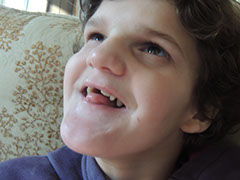 Access to dental care: A significant gap
Access to dental care: A significant gap
Access to dental services is a well-documented gap for people with disabilities, and Margot was no exception. Of course, there are always varying circumstances: Margot's cleft palate put her at higher risk for dental anomalies (fortunately, these are few), though her risk for cavities is decreased somewhat by the fact that she is predominantly tube fed. She has learned to tolerate tooth-brushing well, which also helps greatly!
One solution: Dental work under anesthesia
Some children with disabilities can learn to tolerate dental and other medical procedures with the help of innovative programs like Practice Without Pressure. This was not the case for Margot, and so we had sought sedation for dental check-ups. As with any use of anesthesia, there are risks (especially for children with a seizure disorder), but Margot had tolerated sedation well in the past.
Until recently, we had coordinated dental check-ups with periodic myringotomies (i.e., placement of ear tubes to address chronic ear infections), which always occurred under general anesthesia. This was still complex: we needed to plan 3 months in advance so that the dentist and Ear Nose and Throat (ENT) specialist could be scheduled together, and there were various pre-op appointments required beforehand. Each of these required time off of work. Then things got even more complicated.
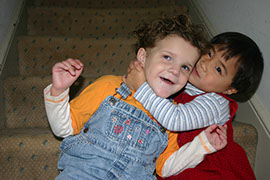 Were her behaviors due to a toothache?
Were her behaviors due to a toothache?
I had been working diligently for years to try to help Margot swallow food or drinks by mouth. This always became more difficult when she was bothered by something else, and we had to play the guessing game that all parents of non-verbal children play when faced with episodes of problem behavior.
Margot started to become more irritable for several days at a stretch, even after we thought we had eliminated constipation or other conditions as possible factors. And so we began to wonder if Margot had a toothache. Margot had behaved in similar ways when adult teeth were coming in, so we felt that this was likely to have become a factor again.
Medicaid merry-go-round: Finding a medical home in-network
Coordinating care with all of Margot's medical specialists had long been a challenge. It is another well-documented gap for children with disabilities, and one that I described in my 2013 book as a great opportunity for advocates and leaders seeking immediate improvements without huge investments in services. I knew I needed Margot's primary care provider to recommend that her dental procedures be conducted under general anesthesia, and so this prompted me to try again to enroll Margot with a medical home affiliated with a local children's hospital.
 So began the confusion... Although the hospital listed themselves as in network for Margot's Pennsylvania Medicaid HMO, billing for Margot's primary care continued to be rejected... and I could not get a referral for a dentist appointment until this was resolved. Neither the HMO nor the hospital's billing department could clarify whether Margot's pediatrician was in-network (apparently, even if a hospital is in network, an individual professional within that hospital might not be). And every time I called the hospital, I was placed on hold for at least 5 minutes, during which I had to listen to a looped recording extolling the hospital as a model for quality care and customer service!!
So began the confusion... Although the hospital listed themselves as in network for Margot's Pennsylvania Medicaid HMO, billing for Margot's primary care continued to be rejected... and I could not get a referral for a dentist appointment until this was resolved. Neither the HMO nor the hospital's billing department could clarify whether Margot's pediatrician was in-network (apparently, even if a hospital is in network, an individual professional within that hospital might not be). And every time I called the hospital, I was placed on hold for at least 5 minutes, during which I had to listen to a looped recording extolling the hospital as a model for quality care and customer service!!
Appointment 1: Yes, Margot needs to see a dentist
I eventually got an appointment with the medical home after a two week wait (Appointment 1). Margot kept her mouth open for the physician for about one second; enough time to lead the physician to believe that a tooth might just have come in, and to note a suspicious spot on another tooth.
Appointment 2: Yes, Margot needs to see a specialized dentist
Before I could be referred to a hospital-based clinic, I also had to demonstrate that a dentist for typical children was not appropriate. I made an appointment (Appointment 2) with one in network and not far from my house. Of course, they were not used to children like Margot, and there is nothing like a crowded, hot waiting room to trigger behavior!
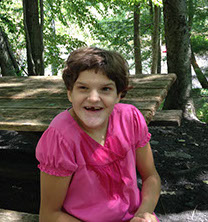 Once called, I dutifully brought Margot inside, and the dental assistant and I wrestled with Margot in the chair for two minutes... enough time for the dentist to confirm that a specialized clinic was needed. Margot was offended by being held down even briefly, but otherwise unharmed.
Once called, I dutifully brought Margot inside, and the dental assistant and I wrestled with Margot in the chair for two minutes... enough time for the dentist to confirm that a specialized clinic was needed. Margot was offended by being held down even briefly, but otherwise unharmed.
Medicaid merry-go-round: Finding a specialized clinic in-network
I had thought that I was fortunate to live within 90 minutes of three children's hospitals, each of which advertised specialized autism research programs on site or with their university affiliate. But the presence of a specialized autism research center is no guarantee that specialized care is actually available. The hospital affiliated with Margot's medical home had a brand new dental clinic, their specialists were in network, but they had yet to find a dentist (and one year later, they had yet to find a dentist). Another hospital did not accept Margot's medicaid (indeed, I am not sure they accepted any medicaid, a rampant problem in the US according to the Government Accountability Office). The hospital furthest away did accept Margot's medicaid plan.
Appointment 3: Yes, Margot needs sedation
A first appointment was scheduled with the specialized hospital-based dental clinic for children with disabilities to confirm that Margot required anesthesia. The dental clinic was more experienced, and moved her through quickly. This time, the assistant and I first tried having Margot sit in a chair. That proved unsuccessful, so we put her into a "papoose". Within one minute, the dentist determined that Margot needed dental work, and that anesthesia was necessary. So we walked down to the Out-Patient Surgery Center to meet with one of the head nurses to ask some questions. We scheduled Appointment 4 at the first available opening, 7 weeks later, and hoped the situation would not worsen in the interim.
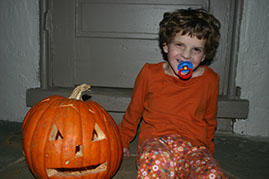 Appointment 4: Yes, Children like Margot need accommodations
Appointment 4: Yes, Children like Margot need accommodations
The actual appointment for out-patient surgery was more hectic; a 75 minute drive to an 11 AM appointment, the long walk from the car to the Surgery Center, then keeping Margot occupied in a hot, crowded, and noisy waiting room, complicated by the fact that she had not been allowed to eat since midnight the night before. But they brought us back within 30 minutes, apparently accommodating Margot.
Then the wait continued, and continued, and continued.... for 2 more hours, and with no clear updates in response to my repeated requests. When the mother in the adjacent bed (whose child had autism) complained that the out-patient surgery center at the other children's hospital had made accommodations for her son, the nurse gruffly responded, "Well, we are not them". The same nurse was just as uninterested when I outlined the simple accommodations another hospital had provided during my last visit to their day surgery. I pressed the nurse again for a specific timeline, to discover that she did not know whether the doctor might be another 45, 90, or 120 minutes. So I walked out, after rescheduling a 6 AM surgery 4 weeks later.
Appointment 5: Margot gets her cavities taken care of
Appointment 5 went relatively smoothly (considering I had to bundle Margot into the car at 4:30 AM to make the 75 minute drive). Four months after first being concerned, and 5 days of missed work later, Margot had completed her dental checkup. Her teeth were cleaned, and a small cavity (which certainly had caused her pain) was finally taken care of.
 About Margot
About Margot
Born in 2000, Margot went straight into the NICU for a month
 GoPro Hero
GoPro Hero
Everyday, incredible
accomplishments captured on video
 Smile!
Smile!
3 providers, 4 months, 5 appointments, too many phone calls, to fix 1 cavity
 Real food, real meals
Real food, real meals
From drip-feeding a chemical blend to real food. Recipes included!
 No "Can't Do"
No "Can't Do"
A new video challenging assumptions about what Margot can enjoy and do.
 Siege or surrender
Siege or surrender
On a Christmas trip to the tropics, I waved a white flag to our new reality.
 Prisoner of Routine
Prisoner of Routine
Creating functional & fun routines took lots of effort but salvaged our sanity.
 Trail Adventures
Trail Adventures
A blog for the Rails to Trails Conservancy offers tips to help hit the trails.
 Leap of faith: Act I
Leap of faith: Act I
My hopes took a hit, so I needed inspiration to take risks again, like kayaking.
 Leap of faith: Act II
Leap of faith: Act II
Inspired to kayak? From idea to implementation, and a lesson for research.
 It's all downhill!
It's all downhill!
Can Margot learn to ski? With expert help and sensible teaching, yes!
 Best summer ever!
Best summer ever!
After 18 years, getting summer right for Margot and the whole family!